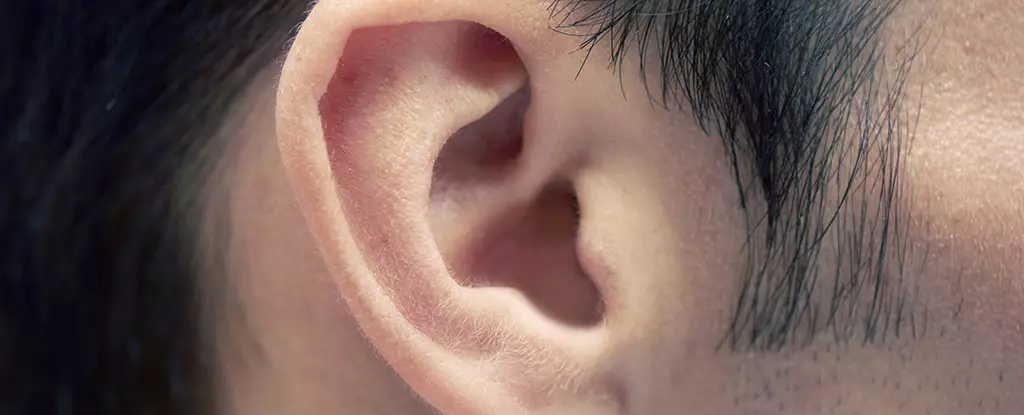Parkinson’s disease remains a formidable challenge in neurology, primarily due to the difficulty in detecting it early enough to significantly alter its course. Traditional diagnostic methods, involving clinical observation and brain imaging, often fail to capture the disease at its infancy. However, recent research has uncovered an intriguing and unconventional biomarker source: earwax. Unlike skin secretions, earwax is protected from environmental factors, providing a more stable and reliable medium for chemical analysis. This breakthrough paves the way for a diagnostic method that could transform how and when Parkinson’s disease is detected.
The Science Behind the Smell
It has long been suspected that Parkinson’s disease alters body chemistry, subtly changing aspects such as sebum composition and body odor. Yet, the variability and exposure of sebum on the skin posed significant challenges in devising consistent, replicable diagnostic tests. Researchers from Zhejiang University took this insight a step further by focusing on volatile organic compounds (VOCs) trapped within earwax. VOCs are a class of chemicals emitted in trace amounts by biological tissues and are known to reflect physiological changes, including inflammation and cellular stress.
By examining these chemical signatures specifically in earwax, scientists can bypass the noise caused by external contamination. The protective nature of earwax makes it an ideal reservoir for the chemical footprints left by neurodegenerative processes. This shift in focus from external skin secretions to an internally shielded secretion marks a significant advancement in biomarker research.
Identifying Parkinson’s Chemical Fingerprints
The critical finding from the study was the identification of four VOCs—ethylbenzene, 4-ethyltoluene, pentanal, and 2-pentadecyl-1,3-dioxolane—that differentiate Parkinson’s patients from healthy controls. These compounds are hypothesized to be byproducts of altered metabolic and neurodegenerative pathways in individuals with Parkinson’s. While not yet definitive diagnostic markers, their consistent presence in affected individuals positions them as strong candidates for developing reliable tests.
It is important, however, to approach these results with cautious optimism. The study was conducted on a moderate sample size of just over 200 participants. Before clinical application, these findings must be validated across a wider demographic spectrum, including different ethnic groups and disease stages, to confirm their universality and diagnostic accuracy.
Leveraging Artificial Intelligence for Precision
An especially exciting component of this research is the integration of artificial intelligence (AI) to enhance diagnostic precision. By feeding VOC data into an AI system—the so-called artificial intelligence olfactory system (AIO)—researchers achieved an impressive accuracy rate of 94.4% in identifying Parkinson’s cases within their sample. This suggests that AI could be instrumental in recognizing complex, subtle patterns in biochemical data that human analysis might overlook.
Nevertheless, skepticism is warranted. Machine learning models are only as reliable as their training data. With relatively small datasets, AI systems risk overfitting—performing well on the studied group but poorly when generalized. This demands a concerted effort to gather larger, more diverse datasets to train and validate AI models before they can be trusted in clinical settings.
Implications for Parkinson’s Management and Research
The potential impact of an earwax-based diagnostic test extends beyond mere convenience. Earlier and more accessible diagnosis would allow patients to begin interventions sooner, potentially slowing disease progression or improving quality of life. Current reliance on expensive imaging or specialist neurological evaluations creates barriers to timely diagnosis, particularly in under-resourced healthcare settings.
Moreover, analyzing VOC changes could illuminate the biochemical underpinnings of Parkinson’s development, providing researchers with clues about its origin and progression. Understanding these pathways is essential for designing effective treatments or preventative strategies.
Still, this exciting frontier does not come without challenges. Standardizing earwax collection methods, ensuring consistent VOC analysis protocols, and confirming findings across multiple populations will require significant scientific rigor. The enthusiasm surrounding this method must be tempered with a healthy dose of scientific scrutiny and validation.
A New Vision for Biomarker Discovery
This pioneering research redefines how we might approach neurodegenerative disease diagnostics. By looking inward and focusing on biomolecules once overlooked, scientists are unveiling layers of human biology that hold keys to early disease detection. The use of earwax, a substance both accessible and overlooked, exemplifies the creative innovation that modern medicine urgently needs.
Ultimately, the real triumph may lie not just in detecting Parkinson’s earlier, but in catalyzing a shift toward chemical-based diagnostics that could apply to a wide array of diseases. While still nascent, this line of work heralds a future where a simple, non-invasive swab could unlock critical health information—dramatically improving outcomes for patients worldwide.


Leave a Reply